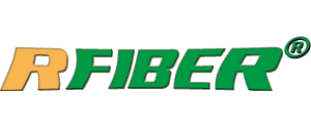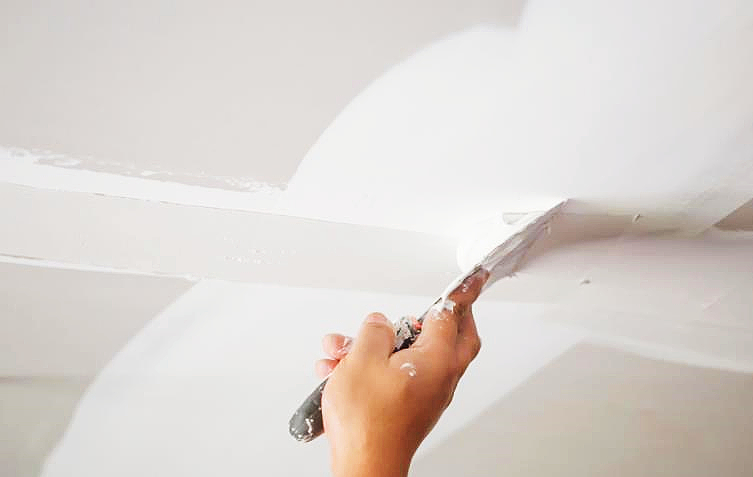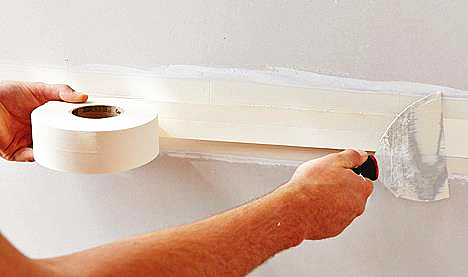What is drywall tape?
Drywall tape is a rugged paper tape designed to cover seams in drywall. The best tape is not “self-stick” but is held in place with drywall joint compound. It is designed to be very durable, resistant to tearing and water damage, and has a slight rough surface to provide maximum adhesion to drywall compound.

There are self-adhesive tapes on the market, and they have some positive aspects since they eliminate the need for a first bedding coat of compound. The only drawback is that the drywall surface must be dust-free and totally dry or they don’t stick! Self-adhesive fiberglass tape, for example, is touted because it is waterproof. However, because it is not smooth like paper tape, it is especially tricky to hide with compound. In other words, if you don’t apply a thick enough layer of drywall compound over the top of it, the tape shows through! It makes your wall look like a painted waffle!
Another drawback with self-adhesive drywall tapes is the moisture in the compound can make the tape’s adhesive release. All in all, not a product I’d recommend for any normal drywall installations or repairs.
How drywall tape is designed…
Drywall tape is designed with a manufactured seam or fold down the middle (graphic right). This seam makes it easy to fold long lengths of tape for use on inside corners. Because this seam is slightly raised, you should always install drywall tape with the outside raised area of the seam against the wall.
How to install drywall tape…
Installing drywall tape is easy. Just don’t be afraid of being sloppy, at least while you’re learning. Put newspaper or plastic tarps under your work till you get the knack. After a while, you will drop very little compound as you learn to work it.
- Apply a layer of drywall compound over the seam or area to be repaired. The compound does not need to be applied evenly, but it must completely cover the area behind the tape. Any dry spots may lead to tape failure and more work later! (It is not important to fill the gap between the panels behind the paper. Indeed, if the gap is very large the weight of the compound filling the gap might cause the tape to bulge out… a problem that is not easily repaired. If you feel the gap should be filled, it is better to fill the gap first, allow the compound to dry completely and THEN apply the tape over it.)
- Lay the tape into the compound, seam bulge toward the wall. Run your taping knife along the tape, pressing it hard enough to cause most of the compound to ooze out from under the tape. There should only be a very small amount of compound left behind the tape.
NOTE: Some installers like to wet the tape first by running it through a bucket of water. This can improve the stick between the compound and the tape by slowing down the drying time. When the tape absorbs the moisture from the compound, it can cause dry spots that may lead to tape lifting. It’s your choice… just thought I’d mention it! - As you work, apply the excess compound over the top of the tape in a thin layer OR clean it from the knife and use fresh compound to lightly cover the tape. Of course, if you prefer you can let the compound dry and put the next layer on later. Most experienced drywall people do this layer at the same time. However, less experienced people sometimes find that they tend to move or wrinkle the tape when applying this second coat right away. So it’s your choice!! The only difference is the time it takes to complete the job.
- After the first coat is dry and before applying the next coat, remove any large lumps or bumps by drawing your taping knife along the joint. Wipe the joint with a rag, if desired, to remove any loose pieces and apply two or more additional coats (depending on your skill level) over the tape, feathering the compound outward each time with a wide taping knife. If you are neat, you should not have to sand till the final coat is dry.
Post time: May-06-2021


